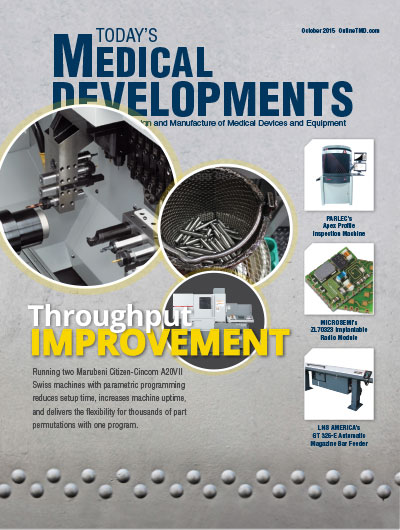 Elizabeth Engler Modic Elizabeth Engler ModicEditor |
There are dozens of lean manufacturing buzzwords used when management starts down a path to improve manufacturing competitiveness. Six Sigma. 5S. Kanban. Overall Equipment Effectiveness.One-piece Flow. Takt Time. Kaizen Events. Total Quality Management. World Class Manufacturing. Total Productive Maintenance. Asset Utilization. Zero Defects. Customer-Driven Inventory. Reliability-Centered Maintenance. Statistical Quality Control. Statistical Process Control. Value Stream Mapping. However, when implementing lean practices within medical device manufacturing, the approach that is making more of an impact is implementing Lean Manufacturing with Lean Product Development. This requires a look much farther upstream from the actual shop floor, starting with the early stages of product development. When you want to better use resources with increased quality and productivity, it is most effective when there is input early on. Considering design and manufacture together creates value that can address potential issues as the process moves from design into full-scale production. Lean is isn’t just for manufacturing; it can aid product development as well. This approach often helps medical device companies beat a competitor to market with a product that is manufactured better, and is better at meeting the needs of the user. The use of lean strategies should start with cross-functional teams for project management. They should be involved in a design and manufacture review at the beginning, which should include the development of a manufacturing plan. As the design moves to more advanced stages, the team should consider alternative manufacturing processes that could shorten internal production lead times, producing higher quality products quicker and more cost-effectively. A change can enable a company to be more agile in delivering a variety of products and/or mass customization and also helps the designer work more efficiently. The more a designer understands the manufacturing process, the more ideas he may bring to a project to eliminate waste and drive down costs. During the process, also apply lean principles within the supply chain. Treating suppliers as an extension of a project early on allows them to understand the product concept better, enabling them to address changes as they occur in design, material, or manufacturing. In addition, they can offer insight and suggest improvements on their contribution to the process, keeping them more vested in on-time delivery of quality and quantity. A team approach – encompassing design, supply, and manufacture – often identifies additional issues early on and can be addressed with a problem-solving mentality. It’s the approach of lean manufacturing, together with lean product development, that works synergistically for success. When applied correctly, product quality improves, manufacturing processes are more efficient, and ultimately, a product gets to market faster. If you’re using these buzzwords for product design and manufacture, are you truly implementing Lean Manufacturing and Lean Product Development together and seeing success? Drop me an email and let me know.
|

Explore the October 2015 Issue
Check out more from this issue and find you next story to read.
Latest from Today's Medical Developments
- Lumetric's Scanning Tubing Measurement System
- Latest advancements in machine tool technology
- Visit Okuma America at IMTS 2024
- March 2024 USMTO orders were $354.7 million
- AM for Aircraft Cockpit Interior Components
- Arizona WearTech Center member receives new patent
- SABIC showcased progress in plastic innovation
- Ink for 3D-printing flexible devices, no mechanical joints





